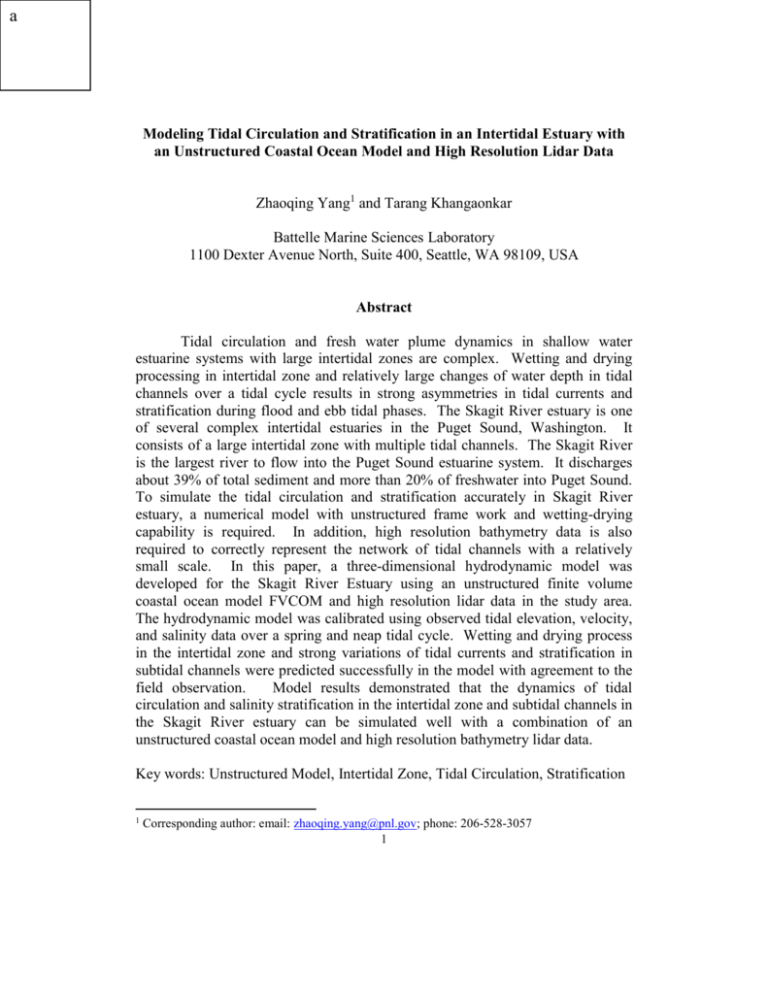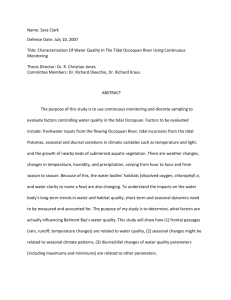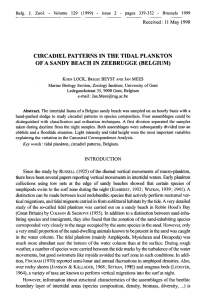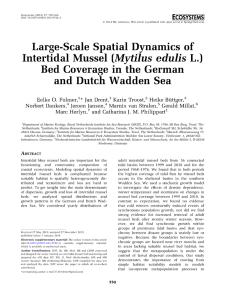Coastal Circulation and Effluent Transport Modeling at Cherry Point
advertisement

a Modeling Tidal Circulation and Stratification in an Intertidal Estuary with an Unstructured Coastal Ocean Model and High Resolution Lidar Data Zhaoqing Yang1 and Tarang Khangaonkar Battelle Marine Sciences Laboratory 1100 Dexter Avenue North, Suite 400, Seattle, WA 98109, USA Abstract Tidal circulation and fresh water plume dynamics in shallow water estuarine systems with large intertidal zones are complex. Wetting and drying processing in intertidal zone and relatively large changes of water depth in tidal channels over a tidal cycle results in strong asymmetries in tidal currents and stratification during flood and ebb tidal phases. The Skagit River estuary is one of several complex intertidal estuaries in the Puget Sound, Washington. It consists of a large intertidal zone with multiple tidal channels. The Skagit River is the largest river to flow into the Puget Sound estuarine system. It discharges about 39% of total sediment and more than 20% of freshwater into Puget Sound. To simulate the tidal circulation and stratification accurately in Skagit River estuary, a numerical model with unstructured frame work and wetting-drying capability is required. In addition, high resolution bathymetry data is also required to correctly represent the network of tidal channels with a relatively small scale. In this paper, a three-dimensional hydrodynamic model was developed for the Skagit River Estuary using an unstructured finite volume coastal ocean model FVCOM and high resolution lidar data in the study area. The hydrodynamic model was calibrated using observed tidal elevation, velocity, and salinity data over a spring and neap tidal cycle. Wetting and drying process in the intertidal zone and strong variations of tidal currents and stratification in subtidal channels were predicted successfully in the model with agreement to the field observation. Model results demonstrated that the dynamics of tidal circulation and salinity stratification in the intertidal zone and subtidal channels in the Skagit River estuary can be simulated well with a combination of an unstructured coastal ocean model and high resolution bathymetry lidar data. Key words: Unstructured Model, Intertidal Zone, Tidal Circulation, Stratification 1 Corresponding author: email: zhaoqing.yang@pnl.gov; phone: 206-528-3057 1









